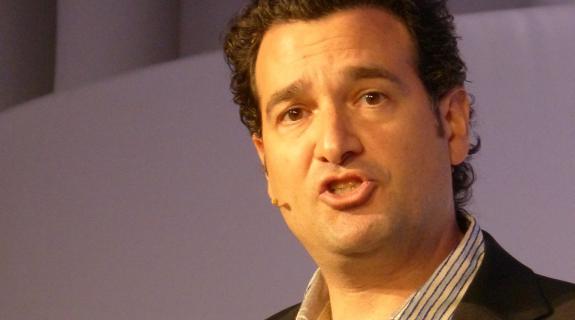Millennials are the new Baby Boomers. Some 80 million strong with ever-increasing buying power, marketers can’t afford to ignore these 22-to-37-year-olds.
In his session, Millennial Trends and the New Normal, Avant-Guide’s Daniel Levine offered marketers nine commandments to most successfully reach this important group. He based these commandments on current trends.
“Social trends are shared changes and sentiment in any measureable direction,” Levine said, who also serves as global editor of WikiTrend.org. “Our goal is to recognize emerging trends and hope to understand what these things are.”
1) Use the language of Brooklyn: Just because you aren’t from Brooklyn doesn’t mean you can’t talk like you are.
“In Brooklyn, everything is organic and local and artisanal and small batch,” said Levine. “We’re seeing that across the industrial spectrum, but Millennials are really answering to these terms.”
Levine provided several examples to illustrate about what he was talking, including Coke Life, which is sold only in Argentina and Chile and is made with organic, locally sourced sugar and stevia; and fair trade organic vodka made with quinoa. He also mentioned Casa Diablo, the world’s first vegan strip club, located in Portland, Ore., which takes some Millennial-friendly concepts and marries them with one of the world’s oldest trades.
“These kinds of products are resonating across the spectrum,” Levine said.
2) Create connections … both on and off line. “We’re seeing a lot of that and connectivity has become part of the DNA of Millennials.”
Part of that includes doing good, another trend that defines Millennnial lifestyles.
For example, in Los Angeles, volunteers jump on a bus that drives them to an undisclosed location. When they show up, they embark on a volunteer project. Levine also said the growing popularity of AirBNB, through which people rent out their homes to tourists, is partly due to the connectivity it offers. Last week, the service was valued at $10 billion.
3) Pop Up Differently
Pop-up restaurants are by now a relatively common occurrence, but Millennials still seem to love everything pop-up. That can be a Starbucks café popping up in a railway car in Switzerland or the ability to buy and have groceries delivered just by using your mobile QR code on a Tesco billboard while at Heathrow airport.
“People want to experience things that their friends are not experiencing so they can go and brag about it,” Levine said.
4) Go Green and Upcycle
Much like “speaking the language of Brooklyn” and the desire to do good, everything green remains popular among Millennials.
According to Levin, “Get Lucky” and “Happy” singer and producer Pharrell Williams created a clothing line out of fabric that was partially sourced from plastic that is being pulled out of the oceans.
“Pharrell is a man who has his finger on the pulse,” says Levine. “This idea that they can buy something that’s good for the environment is really resonating with people.”
Similarly, Proof Eyewear upcycles used skateboard decks to create hip eyewear, and the Marriott London takes old linens and bed sheets from the hotel and upcycles them into shoe or clothing bags that are both sold to guests and used in rooms.
5) Mobilize your Viewers
Considering the prevalence of mobile phones, this one seems fairly obvious, but Millennials are so reliant on their mobile phones that some hotels are starting to eliminate the check-in and key process altogether. Guests check into these hotels on their way from the airport and are given a room number. They don’t even need keys – plastic cards or otherwise – to get into their rooms.
Some Starbucks allow customers to order and pay for their drinks on their mobile phone, so when they get to the store all they have to do is grab their coffee and go.
6) Talk to their hand … via wearable technology
All the rage at the Consumer Electronics Show, wearable tech is on the runway waiting to take off. Similar to mobile phones, forward-thinking brands are starting to integrate wearable tech into their businesses. For example, Virgin Atlantic staff are wearing Google Glass when customers check into flights. They already know customers’ names and know what flight they are on.
Other wearable tech includes ski gloves embedded Bluetooth so you can change your music or answer your phone without having to take off your gloves. Similarly, bike helmets have been developed using fighter pilot and astronaut technology that can read your brain waves and measure your heart rate and breathing to give you immediate biofeedback.
There’s even an e-toothbrush that sends your oral health and habits to your dentist.
Finally – and perhaps most scarily—“the future is smart tattoos that include all of the information that a smart phone might include but printed on your wrist.”
7) Facilitate personalization
Similar to “pop up differently,” Millennials want things that are unique to them about which they can brag to their friends.
8) React to your environment
According to Levine, eyeball tracking will soon replace computer mice and swiping your finger along a touch screen.
“The future is people stopping in the middle of the sidewalk and doing a Google Eyes at their phones. Eyeball tracking is quickly replacing the computer mouse, especially for mobile devices,” he says.
9) And finally: Be very transparent
“Millennials have a distrust of companies. Don’t present yourself as you are not.”
For example, a strip-mall pizza joint that billed itself as the “World’s Best Pizza,” and clearly was not since it was not located in Naples, Italy, went out of business within four months.
Levine’s advice on this applies in many situations beyond marketing: “Do what you say you are going to do and be who you say you are. “
Trend-spotting may require some time and attention, but it’s useful.
Says Levine: “Once you figure out what’s motivating your viewers to do things, you can answer in creative innovative ways and people will automatically pay attention.”
Tags:













































__twocolumncontent.jpg)











